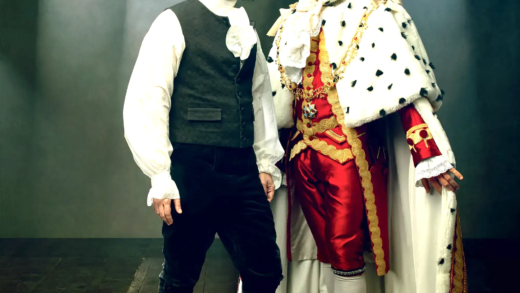Camille Pissarro significantly impacted fellow artists, inspiring them through mentorship and innovative techniques. His evolving style, from realism to vibrant Impressionism, reflects his adaptability and artistic genius. Pissarro’s outdoor painting methods emphasize observation and spontaneity, offering valuable insights for contemporary artists.
Who Was Camille Pissarro: A Brief Overview
Camille Pissarro was a pivotal figure in the Impressionist movement, known for his profound impact on the art world. Born on July 10, 1830, in Charlotte Amalie, Saint Thomas, Pissarro grew up in a culturally rich environment that shaped his artistic vision. His mixed heritage, with a Jewish father and a Danish mother, influenced his perspective and themes in art.
Pissarro moved to France in 1855, where he became deeply immersed in the burgeoning Impressionist scene. He studied under several artists, including Gustave Courbet and Jean-Baptiste-Camille Corot, which refined his techniques and approach to painting. As a mentor to many future artists, such as Paul Cézanne and Georges Seurat, Pissarro’s contributions extended beyond his own works, helping to define the Impressionist style.
Throughout his career, Pissarro maintained a commitment to capturing the essence of everyday life, focusing on landscapes, rural scenes, and urban settings. His ability to blend color and light set him apart, making him a key player in the evolution of modern art.
Pissarro’s Significance in the Impressionist Movement
Pissarro’s significance in the Impressionist movement is undeniable. He was not only a participant but also a leader who helped shape its direction. His works often depicted the effects of light and atmosphere, which became hallmarks of Impressionism.
As a founding member of the Impressionist group, Pissarro’s influence was felt during the first Impressionist exhibition in 1874. His paintings challenged traditional techniques by emphasizing spontaneity and a loose brushwork style. This approach inspired many artists to explore new ways of seeing and representing their surroundings.
Pissarro’s philosophy of art also played a crucial role in the movement. He believed in the importance of capturing modern life and encouraged fellow artists to depict everyday scenes. His dedication to plein air painting, where artists paint outdoors, revolutionized how artists approached their subjects, leading to a more dynamic interpretation of the world.
Key Techniques Used by Pissarro
Camille Pissarro employed several key techniques that defined his unique style. One of the most notable was his use of color. Pissarro often applied vibrant, pure colors side by side, allowing them to blend in the viewer’s eye rather than on the canvas. This technique created a sense of luminosity and movement in his work.
Another significant technique was his focus on light and shadow. Pissarro experimented with varying brush strokes to capture the fleeting effects of natural light. He often painted in the early morning or late afternoon to capture the best light conditions.
- Plein Air Painting: Pissarro was a pioneer of painting outdoors, capturing the essence of the moment.
- Broken Color Technique: This method involved using small strokes of color to create texture and depth.
- Focus on Composition: Pissarro carefully arranged his subjects to lead the viewer’s eye through the painting.
These techniques, combined with his keen observation of nature and society, established Pissarro as a master of Impressionism, influencing countless artists who followed.
Famous Paintings by Camille Pissarro
Camille Pissarro created numerous famous paintings that showcase his exceptional artistry. His works are celebrated for their vibrant colors and innovative techniques. Some of the most notable pieces include:
- The Boulevard Montmartre, Spring: This painting captures the lively atmosphere of Paris in spring, with bustling streets filled with people and blooming trees.
- Haymaking: A stunning representation of rural life, this work emphasizes the beauty of nature and the labor involved in haymaking.
- The Harvest: This piece exemplifies Pissarro’s focus on everyday life, showcasing farmers gathering crops under a bright sky.
- The Red Roofs,1896: Known for its bold colors and dynamic composition, this painting highlights Pissarro’s ability to convey light and shadow.
These famous paintings not only highlight Pissarro’s unique style but also reflect his dedication to capturing the essence of life and nature. His ability to portray light and atmosphere made him a master of Impressionism, influencing generations of artists.
The Influence of Pissarro’s Background on His Art
Camille Pissarro’s background significantly influenced his art. Growing up in Saint Thomas, Pissarro was exposed to diverse cultures, which enriched his artistic perspective. His Jewish heritage and mixed parentage provided a unique lens through which he viewed the world. This multicultural upbringing instilled in him a sense of empathy and understanding of various social classes.
After moving to France, Pissarro’s experiences during the turbulent times of the Franco-Prussian War and the Paris Commune further shaped his artistic themes. He became increasingly focused on depicting the lives of ordinary people, reflecting the struggles and joys of daily existence. His commitment to social realism can be traced back to these early influences.
Moreover, Pissarro’s interactions with other artists, including his role as a mentor, allowed him to explore different styles and techniques. His background fostered a spirit of collaboration and experimentation, leading to his innovative approaches in Impressionism.
Common Themes in Pissarro’s Work
Common themes in Pissarro’s work revolve around nature, rural life, and the effects of light. His paintings often depict:
- Landscapes: Pissarro had a deep appreciation for the beauty of the natural world, frequently painting serene landscapes filled with vibrant colors.
- Daily Life: Many of his works capture the simplicity of everyday life, from farmers working in the fields to bustling city streets.
- Light and Atmosphere: A hallmark of his style, Pissarro’s keen observation of light effects showcases the changing atmosphere in his paintings.
These recurring motifs reflect Pissarro’s belief in the importance of capturing reality and the human experience. His dedication to these themes not only defines his artistic legacy but also resonates with viewers, inviting them to appreciate the beauty in everyday moments.
Pissarro’s Influence on Fellow Artists
Camille Pissarro’s influence on other artists is profound and far-reaching. As a mentor and collaborator, he played a pivotal role in shaping the careers of many prominent artists. Pissarro’s dedication to the Impressionist movement inspired his contemporaries, including Paul Cézanne, Georges Seurat, and Vincent van Gogh.
His innovative techniques, such as the use of broken color and emphasis on light, encouraged artists to experiment with their own styles. Pissarro’s philosophy of portraying everyday life resonated with many, prompting them to explore similar themes in their works. For instance, Cézanne’s later focus on structural forms in nature can be traced back to Pissarro’s teachings.
Additionally, Pissarro’s commitment to plein air painting revolutionized how artists approached their subjects. This emphasis on capturing the essence of the moment outdoors encouraged a whole generation of artists to embrace nature and spontaneity in their work. As a result, Pissarro is often regarded as a father figure of Impressionism, whose legacy continues to inspire artists today.
The Evolution of Pissarro’s Artistic Style
The evolution of Camille Pissarro’s style is a fascinating journey through the changing landscape of art. Throughout his career, Pissarro’s techniques and themes underwent significant transformations. Initially influenced by the Realist movement, he focused on accurately depicting life and nature. However, as he became more involved in Impressionism, his style shifted towards a more vibrant and expressive approach.
In the early stages of his career, Pissarro’s works were characterized by dark tones and detailed realism. Over time, he began to embrace lighter colors and looser brushwork, capturing the ephemeral qualities of light and atmosphere. His later works often featured brighter palettes and a more abstract representation of forms, showcasing his continuous experimentation.
Pissarro also explored various subjects, from rural landscapes to urban scenes, reflecting his evolving interests. This adaptability allowed him to remain relevant within the art community, influencing future movements such as Post-Impressionism. His willingness to embrace change and innovate serves as a testament to his artistic genius.
Insights from Pissarro’s Plein Air Techniques
Camille Pissarro’s outdoor painting techniques offer valuable insights for aspiring artists. His approach to plein air painting emphasized the importance of observing nature in real-time, capturing the essence of a moment. Pissarro often painted outdoors to experience the changing light and atmosphere directly, allowing him to depict a scene’s vibrancy.
Key lessons from his techniques include:
- Observation: Spending time in nature enhances understanding of light, color, and form.
- Spontaneity: Embrace the unexpected; allow the environment to influence your work.
- Color Mixing: Use pure colors side by side to create optical blending, enhancing vibrancy.
By adopting Pissarro’s methods, artists can develop their unique styles while remaining connected to their surroundings. His legacy in outdoor painting continues to inspire those seeking to capture the world in all its beauty.





Comments are closed.